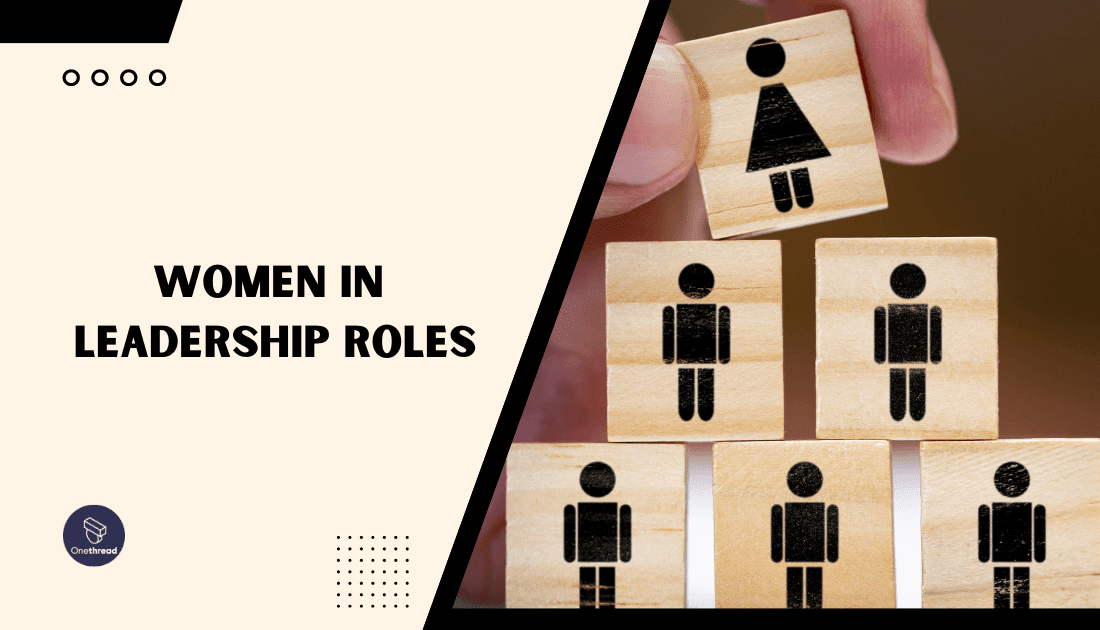In today’s world, women are breaking barriers and shattering glass ceilings as they rise to positions of power and influence. The rise of women as leadership is not only a testament to their resilience but also signals a shift towards gender equality and inclusivity.
It is an exciting time where talented individuals can thrive regardless of their gender. As this trend continues to gain momentum, it becomes crucial to understand the impact that women as leaders have on organizations and society as a whole.
This article explores the journey of women as leaders, highlighting their unique strengths and qualities that contribute to organizational success and societal progress.
The Perks of Female Leadership in Business
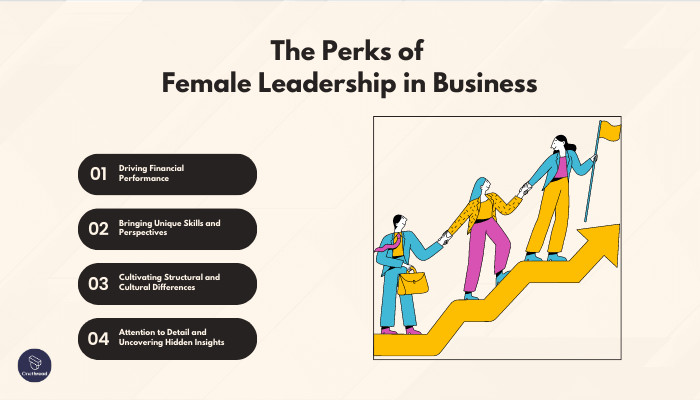
Gender diversity in leadership roles has been proven to have a significant impact on organizational performance. A report by McKinsey & Company conducted in the UK highlights the positive correlation between greater gender diversity in senior executive teams and increased financial success.
Driving Financial Performance
The McKinsey & Company report reveals that as gender diversity on senior executive teams increased, there was a corresponding rise in earnings before interest and taxes (EBIT). For every 10% increase in gender diversity, EBIT experienced a notable growth of 3.5%.
These findings underscore the measurable impact of women leaders on an organization’s bottom line.
Bringing Unique Skills and Perspectives
When women assume leadership positions, they bring a distinct set of skills and imaginative perspectives to the table. Their diverse experiences and backgrounds contribute to a broader range of insights and ideas, which can foster innovation and problem-solving.
Female leaders often offer different approaches to decision-making and have a greater tendency to consider multiple viewpoints.
Cultivating Structural and Cultural Differences
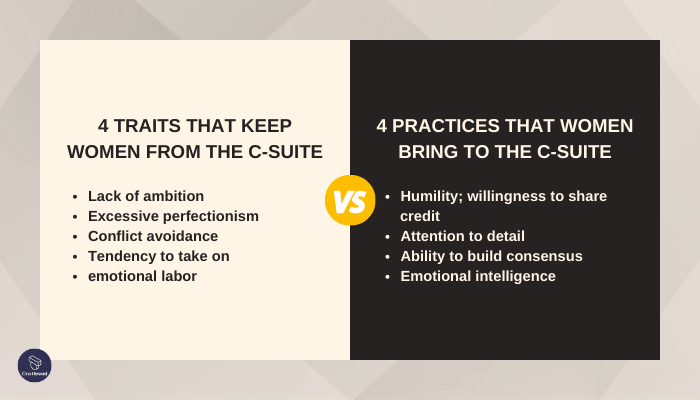



One crucial aspect that women leaders bring to organizations is the introduction of structural and cultural differences. Their presence helps drive the adoption of inclusive practices, diverse talent recruitment, and a supportive work environment.
These factors contribute to better employee satisfaction, retention, and overall organizational performance.
Attention to Detail and Uncovering Hidden Insights
Female leaders tend to exhibit a keen eye for detail and possess a heightened sense of awareness. This unique trait enables them to pay attention to finer details that may be overlooked by others, leading to more thorough analyses and informed decision-making.
By studying and uncovering these overlooked aspects, women leaders contribute to the development of effective and well-rounded solutions.
The inclusion of women in leadership roles is not only a matter of fairness and equality but also a strategic advantage for organizations. The McKinsey & Company report underscores the positive relationship between gender diversity in leadership and financial performance.
Moreover, women leaders bring a different skill set, diverse perspectives, and a commitment to fostering inclusive and innovative work environments. Embracing gender diversity in leadership positions can unlock the full potential of organizations and drive long-term success.
Challenges Faced by Female Leaders
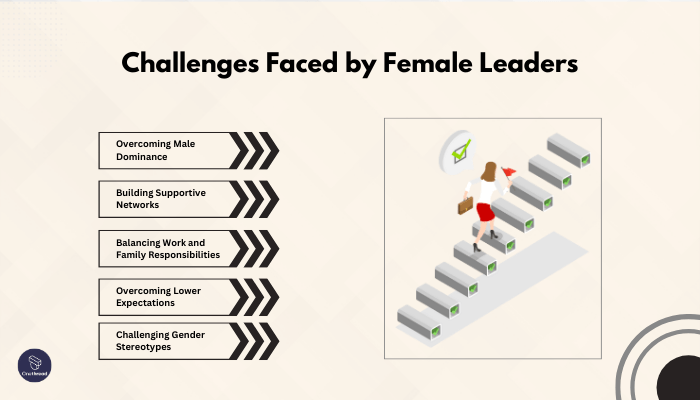



Although the business world is evolving, creating opportunities for women, female leaders still encounter various obstacles. From the dominance of men in leadership positions to the struggle of maintaining work-life balance, women face unique challenges in their pursuit of leadership roles.
Overcoming Male Dominance
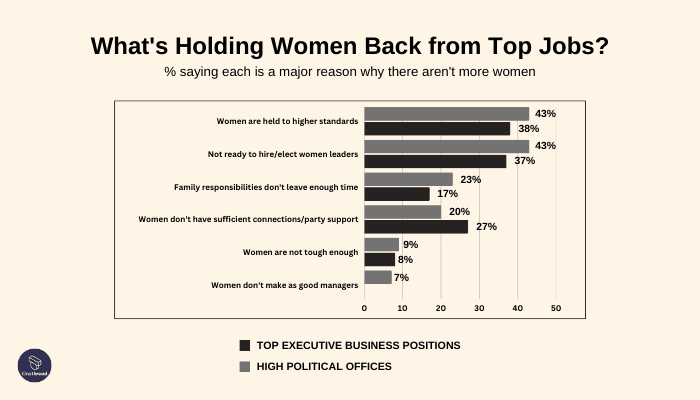



One of the primary challenges for female leaders is the prevalent male majority in boardrooms and leadership positions. However, this situation presents an opportunity for women to stand out and make a lasting impression by showcasing their skills, expertise, and leadership capabilities.
Building Supportive Networks
Creating a supportive network can be challenging in male-dominated spaces. It is crucial for women leaders to seek connections and mentors, both men and women, who can provide guidance and support throughout their career journey. Building strong relationships can help overcome barriers and access opportunities.
Balancing Work and Family Responsibilities
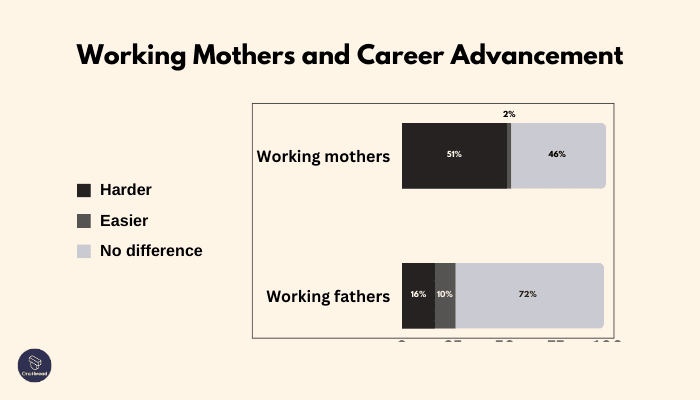



Women in leadership roles often face the dual challenge of managing a demanding career while also fulfilling family responsibilities. Achieving a healthy work-life balance becomes crucial. Learning from the lessons of the pandemic, it is essential to prioritize self-care and establish boundaries to ensure personal and professional well-being.
Overcoming Lower Expectations
Unfortunately, women often face lower expectations compared to their male counterparts and lead to overworking and burnout. However, reframing this perception can serve as a motivator to exceed goals and challenge stereotypes. Embracing the opportunity to showcase capabilities and prove why they should not be overlooked can lead to greater recognition and advancement.
Challenging Gender Stereotypes
Women leaders may encounter the stereotype of being emotional and less decisive. However, it is important to recognize that women bring diverse perspectives and experiences to conversations. Leveraging these strengths, women can contribute fresh ideas, empathetic leadership, and inclusive decision-making to drive positive change within organizations.
14 Reasons Why It’s Important To Have More Women in Leadership
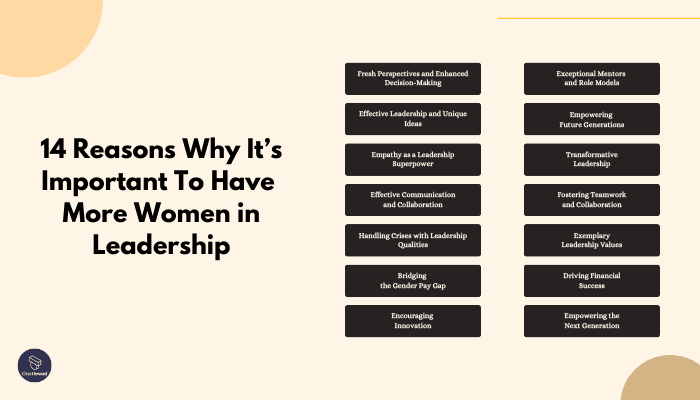



1. Fresh Perspectives and Enhanced Decision-Making
Diverse experiences and viewpoints contribute significantly to fostering innovation and better decision-making within organizations. Companies that prioritize diversity tend to outperform those with lower diversity percentages.
When women assume leadership positions, they bring a range of talents, fresh perspectives, and cultural diversity to their roles, resulting in more successful solutions.
Their ability to pay attention to minor details, coupled with diverse viewpoints and heightened awareness, enables them to uncover hidden insights and understand underlying dynamics.
2. Effective Leadership and Unique Ideas
Research conducted by Business Insider indicates that women are often perceived as more capable and effective leaders compared to their male counterparts. While men may be viewed as more effective leaders until the age of 36 to 40, women demonstrate increasing effectiveness beyond this age and continue to do so until around 60.
Women executives bring unique talents, perspectives, and ideas to the table, which collectively contribute to improved corporate decision-making. This combination of factors allows for the development of fresh viewpoints that lead to enhanced outcomes.
3. Empathy as a Leadership Superpower
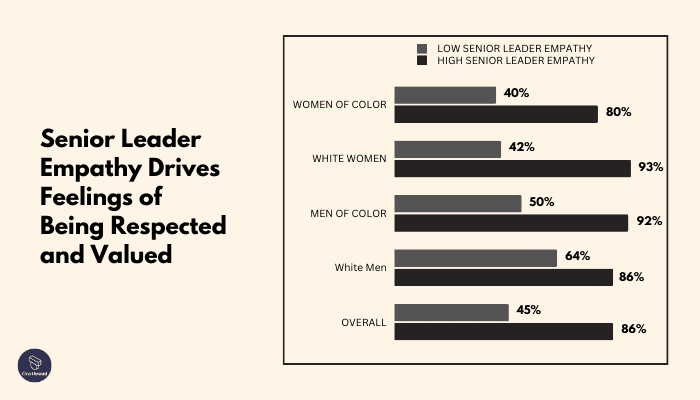



Empathy, often considered the greatest superpower possessed by women due to their diverse life roles in society, plays a crucial role in effective leadership. Empathic leaders possess the ability to understand and accept that individuals perceive the world differently without passing judgment.
They establish meaningful connections with their teams, openly interact with them, and comprehend their challenges. Instead of simply fixing, solving, or dictating, empathic leaders listen to their teams, preparing them for success. Women are more likely to employ this empathic leadership style, which proves more effective in influencing others.
Moreover, empathy fosters open-mindedness and an understanding of diverse perspectives, facilitating the exchange of ideas and providing fresh insights. Consequently, this approach contributes to identifying effective solutions to complex problems.
4. Effective Communication and Collaboration
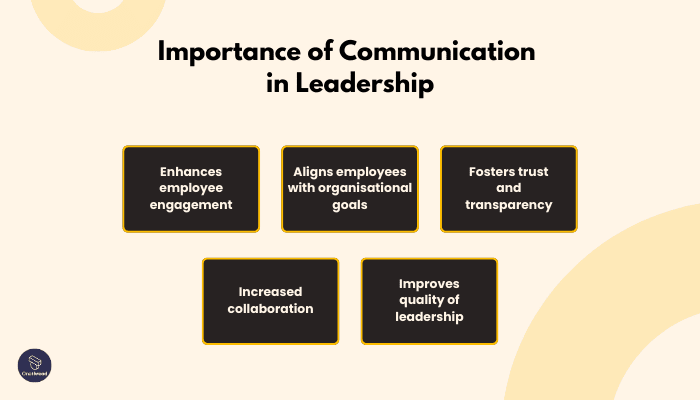



Women excel in communication and collaboration in various aspects of life, including the workplace. They possess an innate ability to communicate with intimacy and connection, making them effective communicators. In contrast, male leaders often rely on authority and a competitive mindset.
Effective communication is a critical skill for women, enabling them to engage in meaningful dialogues with superiors, colleagues, and partners, fostering open lines of communication and clarity in organizational interactions.
5. Handling Crises with Leadership Qualities
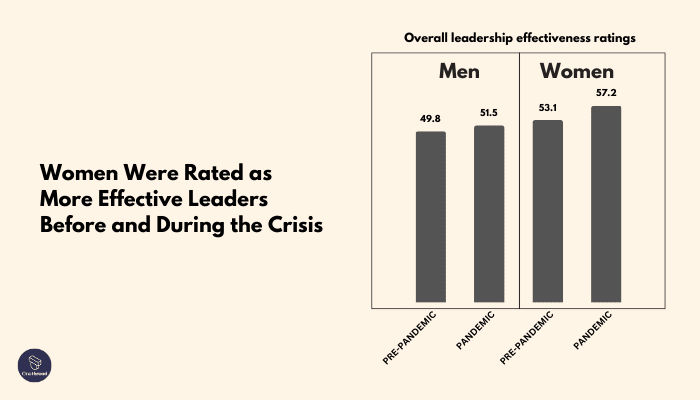



Women possess leadership qualities that are highly valuable, particularly in times of crisis or emergencies. These qualities include people-development, setting clear standards and rewards, serving as role models, inspiring others, and embracing participatory decision-making.
Many women, especially mothers, have honed their caregiving skills, managing domestic crises with compassion and patience. When a female leader faces an emergency situation, these qualities become essential in effectively navigating and resolving the crisis.
6. Bridging the Gender Pay Gap
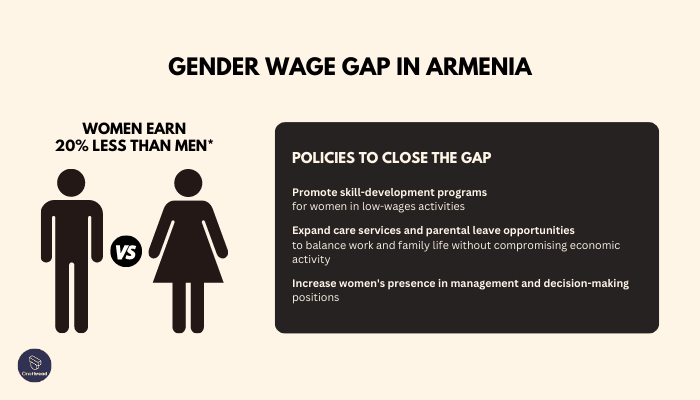



Globally, the gender pay gap stands at 16 percent, with women earning 84 percent of what men do, according to data from the United Nations. Despite decades of progress, the gender wage gap persists in workplaces and organizations.
Addressing the gender pay gap requires exploring various solutions, and providing women with leadership opportunities is one potential answer. The salary discrepancy between genders is reflective of a gender opportunity gap, as men often receive more opportunities that lead to higher-paying leadership positions.
Empowering women leadership roles can help bridge this gap and promote more equitable compensation practices.
7. Exceptional Mentors and Role Models
The importance of mentors, particularly for the younger generation, cannot be overstated. Both men and women benefit from having mentors as they advance in their careers. Women leaders, in particular, play a vital role as mentors and coaches for emerging talent.
Their understanding, determination, strategic thinking, and awareness make them exceptional mentors. There is a need for more women to participate in mentorship programs, with a particular focus on women mentoring other women, to create a brighter future for all.
8. Empowering Future Generations
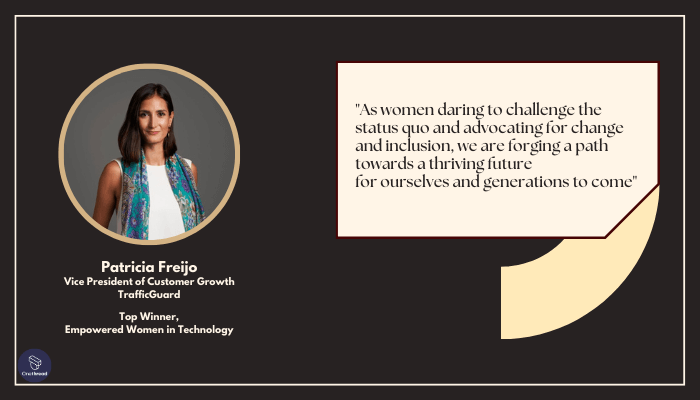



Women leaders pave the way for the younger generation, encouraging them to break down barriers and strive for success. By increasing the number of women in leadership roles, we create a path for aspiring women leaders to follow.
9. Transformative Leadership
Female leaders exhibit a more transformational leadership style, fostering personal and social identification among team members. This approach positively influences the success of organizations by building strong missions, goals, and employee engagement.
10. Fostering Teamwork and Collaboration
Women leaders are known for their passion, enthusiasm, and ability to make wise decisions. By cultivating a less authoritative and more cooperative team environment, women enhance teamwork and foster a supportive culture within the organization.
11. Exemplary Leadership Values
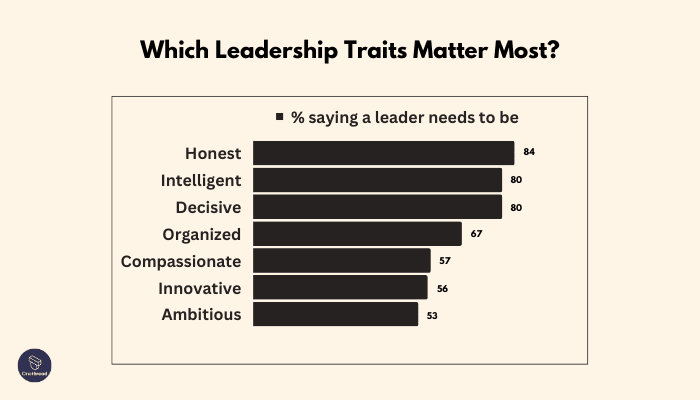



Women excel in primary leadership traits, such as honesty, intelligence, compassion, outgoingness, and creativity. National surveys consistently rank women as equal to or better than men in these key areas.
12. Driving Financial Success
A diverse workforce, including gender diversity, leads to more creative ideas, driving growth, sustainability, and improved financial outcomes. Studies show that gender-diverse companies have a higher likelihood of experiencing above-average profitability.
13. Encouraging Innovation
Gender diversity brings new experiences and perspectives, fostering innovation within the business. Women leaders contribute unique skills, perspectives, and innovative ideas that enhance decision-making and drive overall business success.
14. Empowering the Next Generation
Women leaders serve as powerful role models and mentors, particularly for younger generations. By empowering and coaching young talent, women can overcome gender-related obstacles and guide future leaders towards career advancement.
Conclusion
As a woman leader, you have the power to shatter glass ceilings and overcome historical challenges that have held back women for centuries. Your rise to leadership roles signifies progress and positive change in society. Embracing your unique strengths and qualities, such as empathy, collaboration, and resilience, enables you to bring a fresh perspective to organizations.
By embracing diversity and including more women as leadership positions, organizations can benefit from a wider range of perspectives and ideas. Women leaders have been proven to drive innovation, foster creativity, and improve decision-making processes. This ultimately leads to better outcomes for businesses and society as a whole.
Remember that your role as a woman leader is not only important for advancing your own career but also for inspiring future generations of women. Your success paves the way for others to follow in your footsteps and break down barriers that still exist today.
So continue leading with confidence, knowing that you are making a significant impact on organizations and society at large.
Frequently Asked Questions
How Can Women Overcome The Stereotypes And Biases That Have Historically Hindered Their Leadership Opportunities?
To overcome stereotypes and biases, you must challenge them head-on. Prove your capabilities through hard work and success, educate others about gender equality, seek support from allies, and never doubt your worth or potential as a leader.
What Specific Factors Have Contributed To The Increasing Number Of Women In Leadership Roles In Recent Years?
Factors such as increased gender equality, changing societal norms, and women’s empowerment movements have led to a rise in the number of women in leadership roles.
What Are Some Unique Strengths And Qualities That Women Bring To Leadership Positions That Differ From Their Male Counterparts?
Some unique strengths and qualities that women bring to leadership positions include strong communication skills, empathy, collaboration, and the ability to multitask effectively. These traits help create inclusive and supportive work environments.
How Does Having More Women In Leadership Roles Positively Impact Organizations And Society As A Whole?
Having more women in leadership roles positively impacts organizations and society as a whole by bringing diverse perspectives, collaborative decision-making, empathy, and fostering inclusive environments that promote innovation and equality.
Why Is It Important To Have Diverse Perspectives, Including Those Of Women, In Decision-Making Processes And Leadership Positions?
It’s important to have diverse perspectives, including those of women, in decision-making processes and leadership positions because they bring unique insights and experiences that can lead to more innovative solutions and a better understanding of the needs and concerns of different groups.
